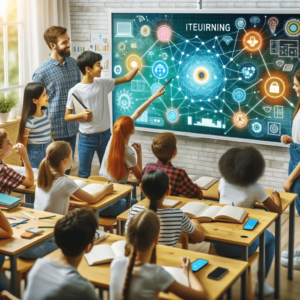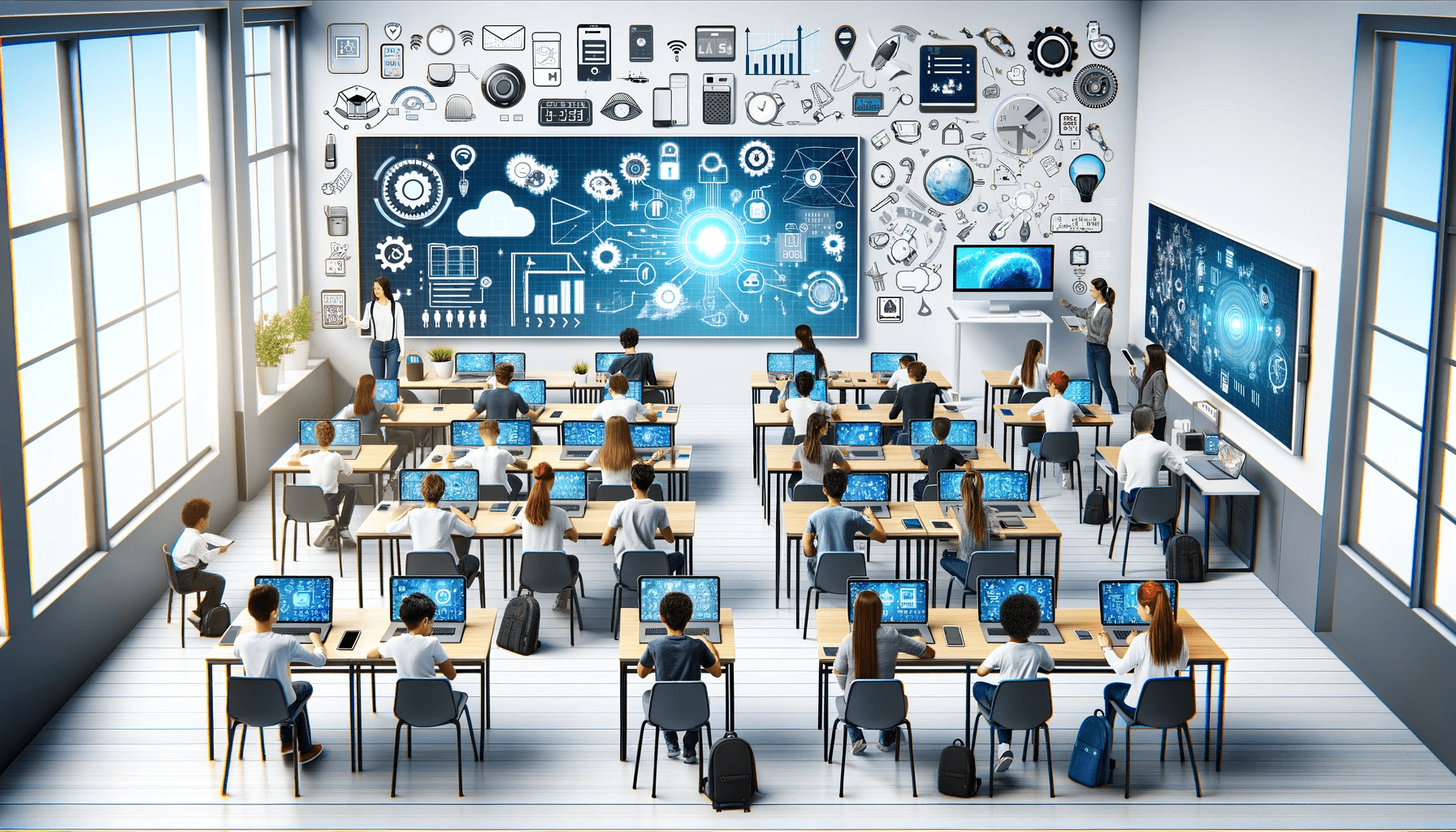The integration of the Internet of Things (IoT) into education is a burgeoning trend that is reshaping the landscape of learning and teaching. IoT in education refers to the use of interconnected devices and systems to enhance the educational experience, making it more interactive, efficient, and tailored to individual needs.
The Impact of IoT on Education
IoT technology in education brings a multitude of benefits, transforming traditional classrooms into dynamic learning environments. Here’s how IoT is making a significant impact:
- Interactive Learning Environments: IoT devices such as smart whiteboards and connected classroom gadgets foster a more engaging and interactive learning experience for students.
- Enhanced Safety and Security: With IoT applications like surveillance cameras and real-time tracking, schools can ensure a safer environment for students and staff.
- Efficient Resource Management: IoT can help in efficient management of school resources, like monitoring energy usage and maintaining infrastructure, leading to cost savings.
- Personalized Learning: Wearables and smart devices can track students’ learning patterns and progress, allowing for personalized educational experiences and feedback.
- Accessibility and Inclusion: IoT aids in creating more accessible learning materials for students with disabilities, ensuring inclusivity in education.

Challenges and Solutions
The primary challenges include privacy concerns, the digital divide, and the need for technical infrastructure. Solutions involve implementing robust data protection policies, promoting equitable access to technology, and investing in modern infrastructure.
FAQs
- What does IoT in education entail?
- IoT in education involves using interconnected devices and systems to enhance learning experiences, making them more interactive and efficient.
- How does IoT benefit students and teachers?
- IoT offers interactive, personalized learning experiences for students and helps teachers in monitoring progress and managing resources more effectively.
- What are the privacy concerns with IoT in education?
- The use of IoT devices raises concerns about data privacy and security, which can be addressed through stringent data protection measures.
- Can IoT bridge the educational divide?
- While IoT has the potential to make education more accessible, concerted efforts are needed to bridge the digital divide and ensure equal access for all students.
Integrating IoT into education is not just a futuristic concept but a practical approach to enhance learning experiences. As technology continues to advance, IoT in education presents limitless possibilities, promising to revolutionize how we teach and learn in the 21st century.


